

CONTACT US
1052 Budapest, Jane Haining Quay, Dock 11.
Customer support is available daily from 9:00 to 22:00.
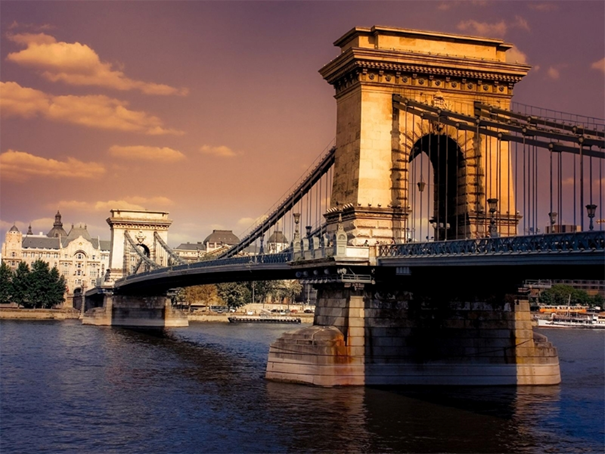
Photo: Silverline Cruises
The Chain Bridge, known as “Széchenyi Lánchíd” in Hungarian, stands as a symbol of architectural and engineering excellence, as well as a testament to the unbreakable spirit of Budapest, Hungary. Its rich history is intertwined with the city’s growth, cultural identity, and determination to connect its two sides, Buda and Pest, separated by the mighty Danube River. It has been a witness to historic events, including protests and celebrations and even World Wars. Due to necessary reconstructions, this iconic bridge was closed for over 2 years. After a long hiatus, the Chain Bridge is finally accessible by all transportation and on foot. The wait is finally over!
Traverse with us to the other side of the bridge and find out more about the past and the present of the first bridge connecting the two parts of the city.
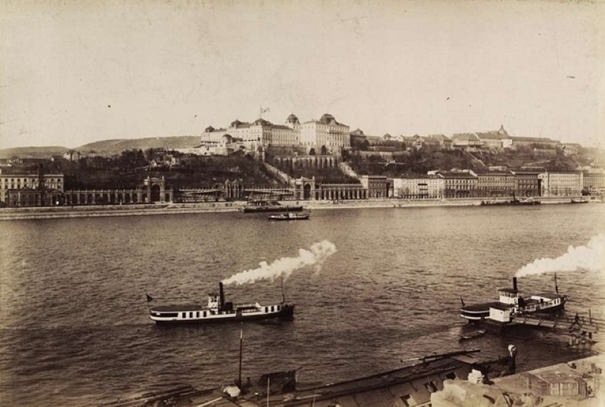
Picture source: Unknown collection – View from the Pest side around 1840
The idea of bridging the Danube to unite Buda and Pest dates back to the 18th century. However, it wasn’t until the early 19th century that the concept gained serious consideration. It was Count István Széchenyi, a Hungarian statesman, who championed the cause of constructing a bridge to stimulate economic growth and cultural exchange between the two cities. Urban legend has it, that the entire consideration of building a bridge to connect the two sides simply came from frustration. As the funeral of his revered father, Ferenc Széchényi took place in Vienna, István needed to cross to the Buda side. Despite the winter months the Danube could not freeze over properly. Thus, he could only rely on the scarce ferry service to bring him to the other side, completely missing out on the funeral.
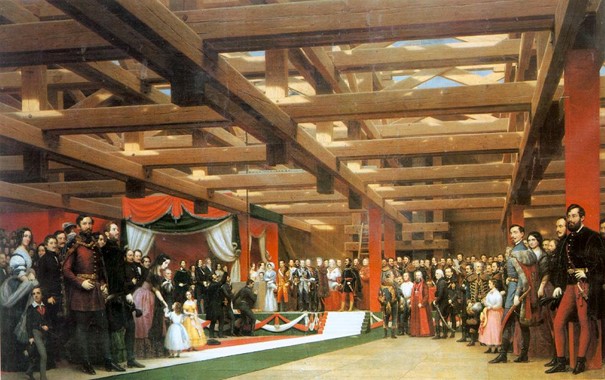
Painting: Groundbreaking ceremony of the Chain Bridge by Miklós Barabás 1864 – Picture source: mek.oszk.hu
In 1839, Count Széchenyi initiated a call for funds to finance the construction of the bridge. English engineer William Tierney Clark was chosen to design the bridge, and Scottish engineer Adam Clark (no relation) oversaw its construction. The Chain Bridge was a marvel of its time, utilizing innovative iron chains to support the main span, making it one of the world’s first permanent bridges of its kind.
The Chain Bridge was officially completed and inaugurated on November 20, 1849.
The total cost of building the bridge was about 6.575 million forints. It is 380 meters long, 14.5 meters wide, and weighs 2,146 tons. At the time of its construction, it was one of the most modern suspension bridges in the world. Until the completion of the Margit Bridge in 1876, the Chain Bridge provided the only overland route between the two riverbanks of the capital.
Its completion was a defining moment for Budapest, marking not only a physical connection between Buda and Pest but also a symbolic bond that united the two halves of the city. The bridge facilitated commerce, culture, and social interaction, playing a pivotal role in the city’s development and growth.
However due to the conclusion of the Independence War against the Habsburg Empire in 1849, which resulted in the defeat of Hungary the inauguration of the Bridge was quiet. Neither Adam Tierney Clark nor Adam Clark was present on this occasion.
Another interesting fact, that even though István Széchenyi was the one who dreamed and launched the project of the Chain Bridge, he himself never crossed the Chain Bridge even further he was absent at the inauguration ceremony as well due to his mental state, during which time he was a patient in a Viennese hospital.
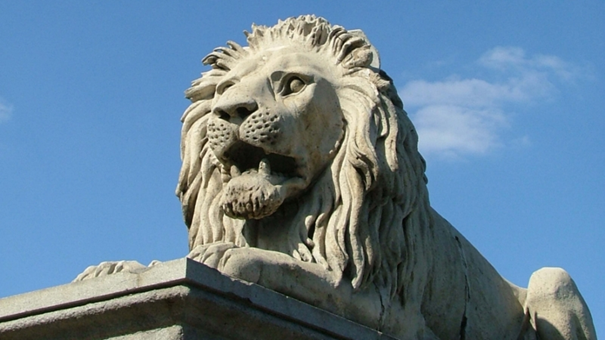
Photo: guideathand.com
Protecting both sides there are all together 4 lion statues at the base of the bridge. However not many people know that they were not there when the Chain Bridge was opened, until 1852. Since then, they have been the focus of stories and speculations. There is also an anecdote about the sculptor who made these fantastic statues: János Marschalkó. According to the legend, during the celebration of the statues he boasted that his statues are flawless and photo realistic. However, a young lad named Jakab Frick, discovered that the lions do not have tongues. The sculptor soon became targeted by jokes and sarcasm. From here there are two versions of this story. The most commonly known version is that after admitting his fault, he committed suicide by jumping of the Chain Bridge. Nowadays we know that this is a story from a Bohemian land. Similar story, 4 lion statues at the base of the bridge in Kulm. In this story the artist lived his life in shame, but no suicide either.
The other more probable version suggests that János Marschalkó got fed up with the accusations and he and betted 500 Forints, that from the yawning perspective of the lion the tongue is at such a low angle that it is barely visible. Henceforth the lions’ statues do have their tongues you just need to search for the details. He was right, he won the bet and offer the sum for charity. During the recent reconstructions of the Chain Bridge, one day the city woke up for a big surprise as one of the stone statues have been replaced by a LEGO sculpture. Consisting of over 850.000 bricks and weighing around 2,8 tons the 1:1 scale lion is truly a marvel to behold. Unfortunately, it has been removed, and the original was placed back, although you can still see the LEGO lion statue on the Margaret Island for the whole summer.
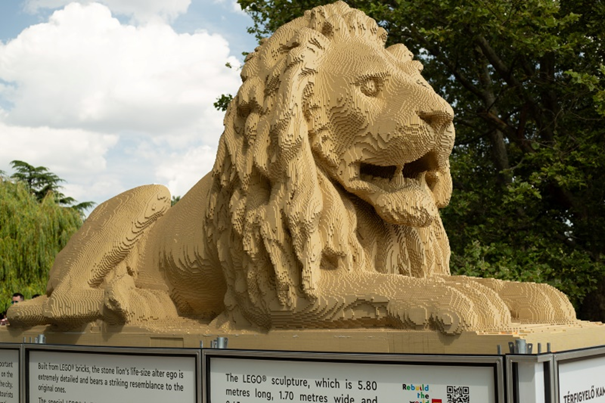
Photo: Silverline Cruises
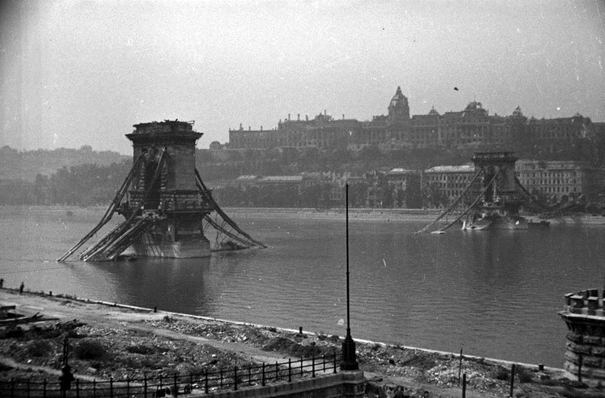
Vista of the Chain Bridge and Buda Palace after World War II. – Photo source: fortepan.hu/ Vörös Hadsereg
The Chain Bridge faced its share of challenges over the years. During World War II, retreating German forces detonated the bridge in 1945, leaving it in ruins. However, the bridge was reconstructed and reopened to the public in 1949.
In the following decades, the Chain Bridge underwent several renovations and restoration projects to preserve its historic beauty and structural integrity. Each endeavor aimed to maintain the original design while incorporating modern engineering techniques to ensure its longevity. Unfortunately, the original “chain” elements have been replaced to more durable cable structures enhancing the weight capacity of the bridge.
However in the past 30 years besides general maintenance, the Chain Bridge had not had a through reconstruction, even though it needed one badly.
In 2019 for the 170th anniversary of the bridge the concept of a large-scale restauration project had risen. However due to the uncertainty of the Pandemic the launch of the construction was delayed, but eventually started in 2021 spring. Creating somewhat of a nuisance, to get efficiently from one side to another in the heart of the city. Long 2 years have passed but now finally the most important bridge both for car and pedestrian traffic is given back to the public. And even better it has improvements too.
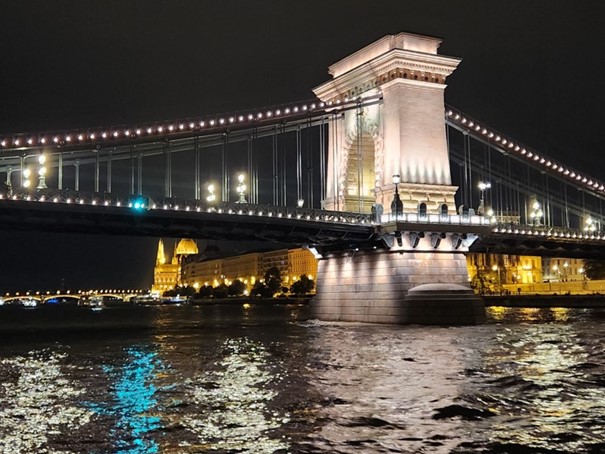
Photo: Silverline Cruises
Not only the new, but also the restored old lamp posts of the public lighting have been renewed, and an energy-efficient system has replaced the older decorative lighting as well. During the renovation of the Chain Bridge, modern LED technology light strings were installed. The color scheme of the new automatic decorative lighting can be dynamically changed: the string lights will be mostly seen in a single, warm white glow throughout the year, but the system is also capable of dressing the bridge in a wide range of different colours on holidays and special occasions.
In addition to the string lights several hundred spotlights also were installed: the former lighting of the gateways was complemented by illuminating the pilaster balconies, outer parts of the bridge, and the arches. Lamp posts will also shine bright between the cast iron brackets on the pier pillars and on the shore pillars, as well as under the bridge structure. After the completion of the renovation, the lamp posts placed on the columns and on the bridge will allow the lion sculptures guarding the bridgeheads to be well-visible even in the dark. The changing of the colours when the lights are turned on is truly spectacular. We hope that this feature was not just a test run and these few minutes of “light show” will be a custom in future as well.
The reception of the new light strings was mixed. Many people consider it too flamboyant and energy inefficient. In addition, despite the anticipation of many drivers the Chain Bridge will only be open for pedestrians, public transportation, and taxis. Expressing the need for reduced car traffic in the city, still this decision is highly debated among locals.
Nevertheless in our opinion the bridge looks stunning, and it is nice to walk across it from one side to the other once again after 2 years of break.
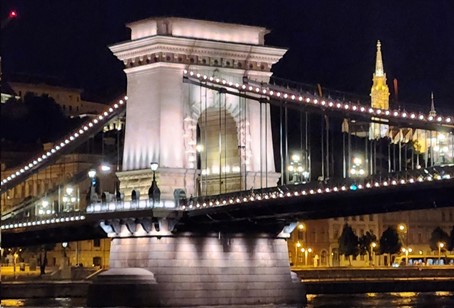
Photo: Silverline Cruises
To witness this beautiful light display we recommend you the best way to discover it, our sightseeing cruise on the river Danube. On your journey you will enjoy the beautiful panorama of the most important sights along the riverbank crossing twice beneath the Chain Bridge. See more about our cruise here.
The bridge with its iconic lion statues, still guarding the entrances have become beloved symbols of Budapest. Today, the Chain Bridge is more than a means of crossing the river; it is a cherished cultural and historical monument, a must-visit attraction, and a testament to the power of human ingenuity and determination. As one of Budapest’s most iconic landmarks, the restored Chain Bridge continues to unite the past and the present, linking the aspirations of generations and inviting visitors to share in its timeless beauty over the river Danube.